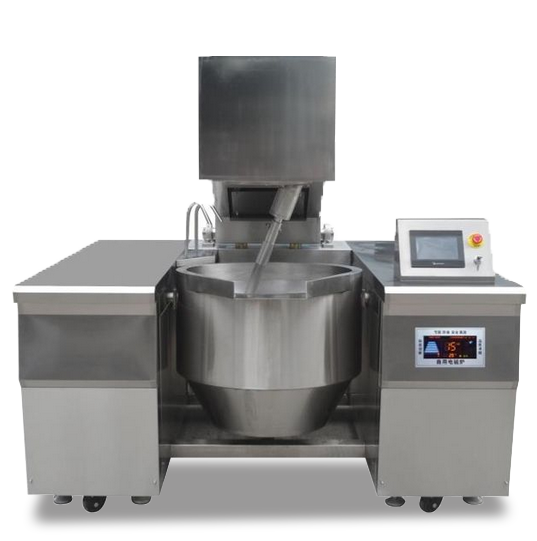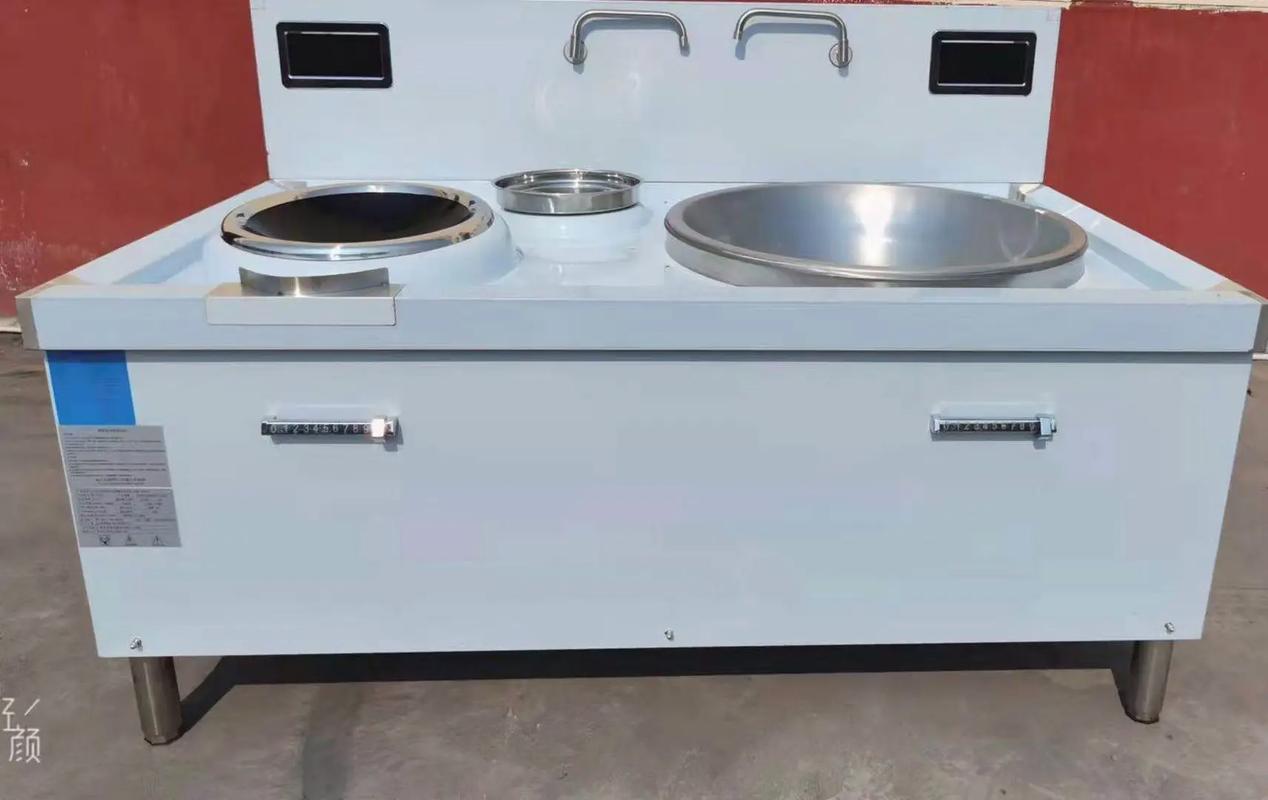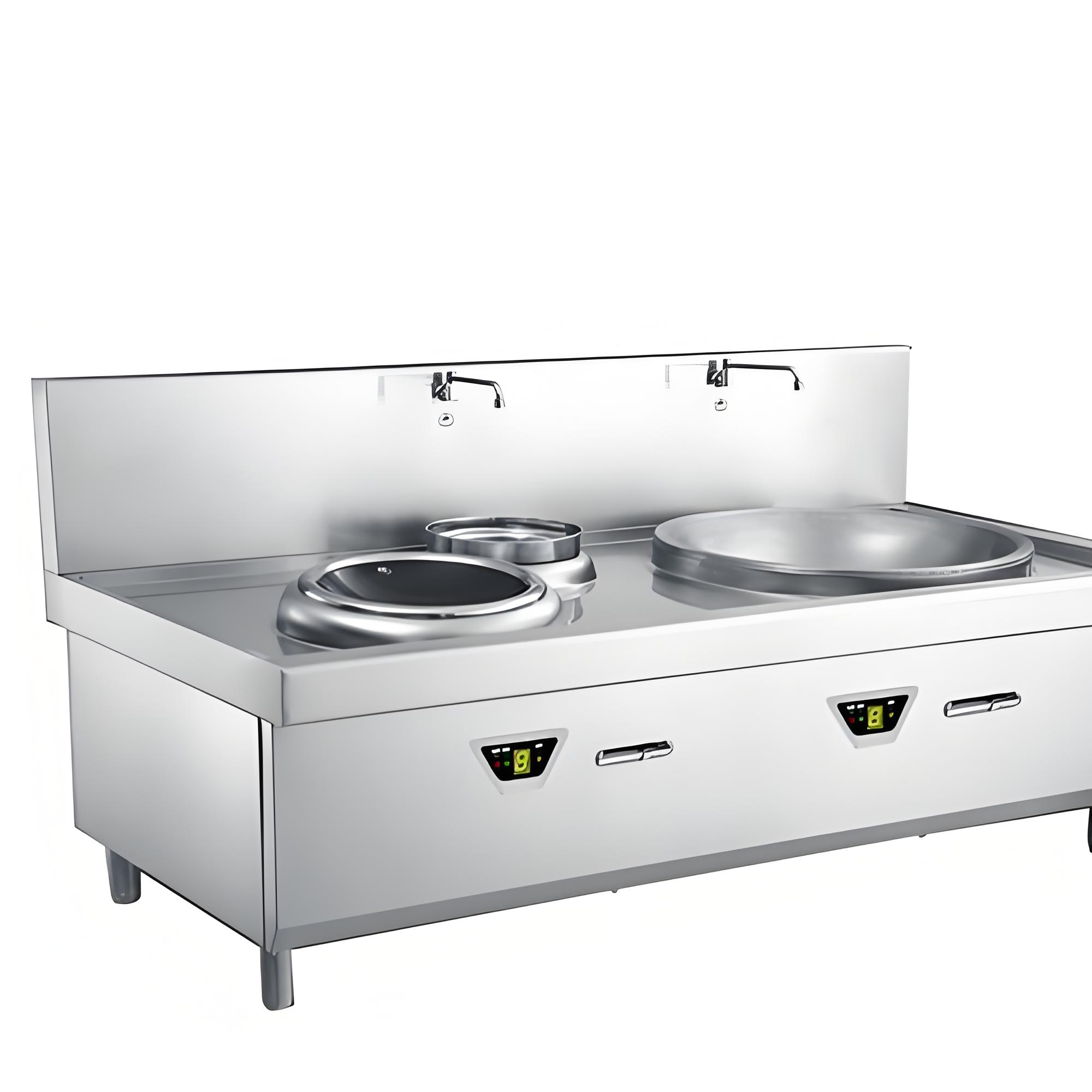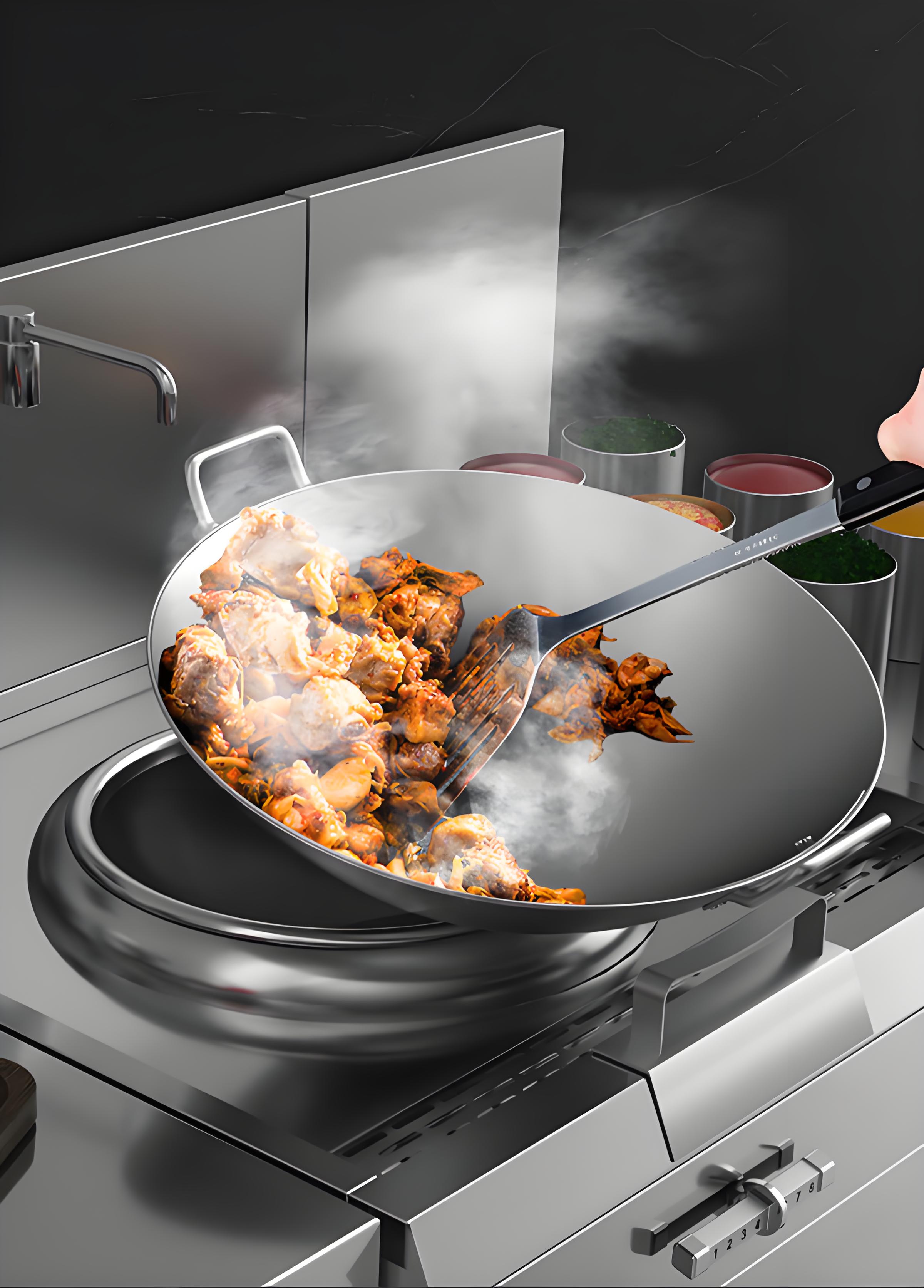As a veteran in the restaurant equipment industry, I’ve helped dozens of restaurant owners outfit their kitchens with the right tools to keep their operations humming. When it comes to selecting commercial induction cooktops for a 200-seat restaurant, the stakes are high. You’re not just picking an appliance; you’re investing in a piece of equipment that can make or break your kitchen’s efficiency, safety, and profitability. Over the years, I’ve seen kitchens thrive with the right induction setup and others struggle with poor choices. In this article, I’ll walk you through the key factors to consider, share lessons from my experience, and provide practical tips to ensure you choose cooktops that meet your restaurant’s unique needs.

Why Induction for a 200-Seat Restaurant?
Induction cooktops have become a game-changer in commercial kitchens, and for good reason. They heat cookware directly using electromagnetic fields, which means faster cooking, precise temperature control, and a cooler, safer kitchen environment. In a 200-seat restaurant, where you’re likely serving 300–500 covers during peak hours, these benefits translate into faster service, lower energy bills, and happier staff. I’ve worked with chefs who swear by induction for its ability to simmer delicate sauces without scorching or sear steaks in record time.
But choosing the right induction cooktop isn’t as simple as picking the shiniest model. You need to consider your menu, kitchen layout, staff preferences, and budget. Let’s dive into the key factors to guide your decision.
Key Factors to Consider When Choosing Induction Cooktops
1. Match the Cooktop to Your Menu
The first question I always ask clients is, “What’s on your menu?” A 200-seat restaurant often has a diverse menu, from appetizers to main courses to desserts, each requiring different cooking techniques. For example, when I helped a bistro with a heavy focus on Asian cuisine, we prioritized induction wok burners for their stir-fry stations. In contrast, a steakhouse needed high-wattage cooktops for searing.
Here’s how to align your cooktop choice with your menu:
High-volume cooking: If your menu includes items like soups, pastas, or braised dishes, opt for cooktops with 3000–5000 watts for stock pots and heavy-duty cooking.
Precision cooking: For sauces or delicate desserts, choose models with precise temperature controls (e.g., 140°F–460°F in 5–10-degree increments).
Wok cooking: If Asian dishes are a focus, invest in induction wok burners with bowl-shaped surfaces to accommodate round-bottomed woks.

2. Wattage and Power Requirements
Wattage is a critical factor in commercial kitchens. Higher wattage means faster cooking, which is essential during peak hours in a 200-seat restaurant. I once worked with a client who underestimated their power needs, and their 1800-watt cooktops couldn’t keep up with demand, leading to delays. Most commercial induction cooktops range from 300 to 14,000 watts, but for a restaurant of this size, I recommend units in the 2600–5000-watt range for versatility and speed.
Consider your kitchen’s electrical setup:
120V vs. 240V: Lower-wattage units (up to 1800 watts) use standard 120V outlets, which are great for portability but may not handle heavy-duty cooking. Higher-wattage units (2600–5000 watts) require 240V outlets, which are common in commercial kitchens but may need electrical upgrades.
Available power: A 200-seat restaurant kitchen typically needs 400–600 amps total. A single high-wattage induction range can draw 60–80 amps, so ensure your electrical panel can handle multiple units.
Here’s a quick reference table for wattage needs:
|
Menu Type |
Recommended Wattage |
Outlet Type |
Best Use Case |
|---|---|---|---|
|
Light-duty (e.g., warming) |
300–1800 watts |
120V |
Buffets, food warmers |
|
Medium-duty (e.g., sautéing) |
1800–2600 watts |
120V/240V |
General cooking, smaller dishes |
|
Heavy-duty (e.g., searing) |
2600–5000 watts |
240V |
High-volume cooking, stock pots |
|
Wok cooking |
3500–5000 watts |
240V |
Stir-fries, Asian cuisine |
3. Number of Burners and Kitchen Space
A 200-seat restaurant needs multiple cooking stations to handle simultaneous orders. The number of burners depends on your menu and kitchen layout. In one project for a Mediterranean restaurant, we installed a mix of double-burner and single-burner cooktops to maximize flexibility in a compact space.
Consider these factors:
Single vs. multi-burner: Single-burner units are portable and great for smaller stations or front-of-house displays. Double or four-burner units are better for high-volume cooking but take up more space.
Countertop vs. drop-in: Countertop models are mobile and easier to repair, while drop-in units create a sleek, flush look but require custom counter cuts.
Space constraints: Measure your kitchen’s counter space. A typical double-burner unit is 23–30 inches wide, while single-burner units are 12–15 inches. Ensure there’s enough room for staff to move safely.

4. Temperature Control and Precision
One of induction’s biggest selling points is its precise temperature control. Unlike gas or electric ranges, induction cooktops can maintain temperatures within a 5–10-degree range, which is critical for consistent dishes in a busy restaurant. I’ve seen chefs nail delicate beurre blanc sauces on induction cooktops that would’ve scorched on gas. Look for models with:
Multiple power settings: At least 15–20 power levels (e.g., 200–1800 watts) for fine-tuned control.
Temperature sensors: Higher-end models have sensitive sensors that adjust heat quickly, ideal for simmering or tempering chocolate.
Digital displays: LED displays with precise temperature readouts make it easier for staff to replicate recipes.
5. Durability and Certifications
Commercial kitchens are tough environments—grease, moisture, and high temperatures are constant. I learned this the hard way early in my career when a client’s budget cooktop failed during a dinner rush due to grease buildup. Commercial-grade cooktops are built to withstand these conditions, with features like:
Conformal coated boards: These protect electronics from grease and moisture.
NSF and UL certifications: Ensure the unit meets sanitation and safety standards. Check with your local health department for specific requirements.
Warranty: Look for at least a one-year warranty covering manufacturer defects. Some brands like Vollrath offer robust warranties for commercial use.
6. Cookware Compatibility
Induction cooktops require magnetic cookware (e.g., cast iron or certain stainless steels). I once consulted for a restaurant that switched to induction but hadn’t budgeted for new cookware, leading to a last-minute scramble. To avoid this:
Test existing cookware with a magnet. If it sticks, it’s induction-ready.
Budget for induction-compatible pots, pans, or woks. Cast iron and magnetic stainless steel are ideal.
Consider an induction disc for non-magnetic cookware (e.g., aluminum), though this is less efficient.

7. Ease of Cleaning and Maintenance
A 200-seat restaurant’s kitchen is a high-traffic zone, and spills are inevitable. Induction cooktops shine here because their glass-ceramic surfaces don’t absorb heat, so spills don’t bake on. In one project, a client raved about how their staff could wipe down the cooktops mid-service with just a damp cloth.
Choose models with smooth surfaces or buttons over knobs for easier cleaning.
Follow manufacturer guidelines for deep cleaning (e.g., using vinegar or induction-specific cleaners).
Ensure easy access for repairs, especially for countertop models.
Real-World Example: A Success Story
Let me share a story from a project I worked on for a 200-seat fusion restaurant. The menu featured a mix of grilled meats, stir-fries, and delicate sauces, so we needed versatile cooktops. After analyzing their peak-hour needs (about 400 covers), we chose two Vollrath Mirage Pro 59500P units (3500 watts each) for heavy-duty cooking and two Avantco IC1800 countertop units (1800 watts) for lighter tasks like sauces. We ensured the kitchen had 240V outlets and upgraded the electrical panel to handle the load. The result? The kitchen handled peak rushes smoothly, and the chefs loved the precise temperature control for their sauces. Plus, the energy-efficient cooktops cut their utility bills by 15% compared to their old gas ranges.
Common Mistakes to Avoid
From my experience, here are pitfalls to steer clear of:
Underestimating power needs: Low-wattage cooktops can’t handle high-volume cooking. Plan for peak-hour demands.
Ignoring cookware costs: Switching to induction often requires new pots and pans. Factor this into your budget.
Overlooking electrical capacity: Check your kitchen’s amperage and outlet types before buying.
Skipping staff training: Induction cooktops require a learning curve. Train your team on power settings and safety features.
Practical Tips for Choosing and Implementing
Here’s a checklist based on my years of experience:
Assess your menu: Identify cooking techniques (e.g., searing, simmering, wok cooking) to determine wattage and burner needs.
Check electrical capacity: Work with an electrician to confirm your kitchen can support 240V units and multiple cooktops.
Test cookware: Ensure your pots and pans are induction-ready or budget for replacements.
Compare brands: Look at reputable brands like Vollrath, Avantco, or Waring for durability and performance.
Plan for training: Schedule a session to familiarize staff with induction controls and safety features.
Consider portability: Countertop units offer flexibility for layout changes or front-of-house displays.

The Bigger Picture: Why Induction Matters
Beyond the technical details, choosing the right induction cooktops can transform your restaurant’s operations. I’ve seen kitchens go from chaotic to calm simply by switching to induction, thanks to its speed, safety, and efficiency. In one memorable project, a chef told me their new induction setup not only sped up service but also made the kitchen a more pleasant place to work—no more sweltering heat from gas burners. That kind of feedback reminds me why I love this work: the right equipment empowers your team to shine.
Final Thoughts
Selecting commercial induction cooktops for a 200-seat restaurant is about more than just picking a model—it’s about aligning your equipment with your menu, staff, and long-term goals. By focusing on wattage, burner count, durability, and cookware compatibility, you can create a kitchen that’s efficient, safe, and ready for growth. My years in the industry have taught me that thoughtful planning pays off, whether it’s avoiding electrical upgrades or ensuring your chefs can work comfortably during a busy shift. Take the time to evaluate your needs, and you’ll end up with cooktops that power your restaurant’s success.

Related Questions and Answers
Q: How many induction cooktops do I need for a 200-seat restaurant?
A: It depends on your menu and peak-hour volume. For 300–500 covers, plan for 4–6 burners across 2–3 cooktops, with a mix of high-wattage (2600–5000 watts) and medium-wattage (1800–2600 watts) units for versatility.
Q: Are induction cooktops worth the investment for a restaurant?
A: Absolutely. They offer faster cooking, energy efficiency (up to 15% more than electric ranges), and a cooler kitchen, which boosts staff comfort and reduces ventilation costs.
Q: Can I use my existing cookware with induction cooktops?
A: Only if it’s magnetic (e.g., cast iron or certain stainless steels). Test with a magnet—if it sticks, it’s compatible. Budget for new cookware if needed, or use an induction disc for non-magnetic pans.
Q: How do I maintain induction cooktops in a busy kitchen?
A: Wipe down the glass-ceramic surface with a damp cloth and mild detergent after cooling. For deeper cleaning, use vinegar or an induction-specific cleaner. Follow manufacturer guidelines to avoid damaging the surface.





